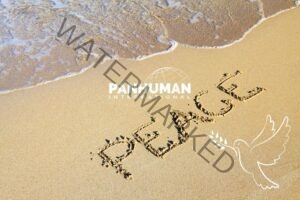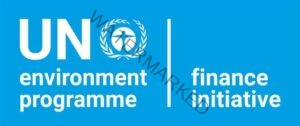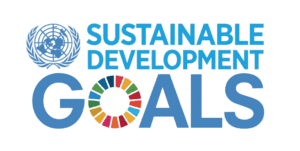Global Peace & Disarmament
Global Conflict Escalation & Potential for a 3rd World War
- Home
- Human Rights
- Global Peace & Disarmament Challenge in the 21st Century
United Nations' Sustainable Development Goals (SDGs)
Global Peace & Disarmament Challenge in the 21st Century
 As the world stands at the precipice of escalating global conflicts, the urgency of disarmament and the pursuit of peace becomes more vital than ever. With tensions rising across borders and geopolitical divides, the specter of a Third World War looms large. Every weapon, especially those of mass destruction, represents an existential threat to humanity, and now is the time to choose diplomacy and peace over conflict.
As the world stands at the precipice of escalating global conflicts, the urgency of disarmament and the pursuit of peace becomes more vital than ever. With tensions rising across borders and geopolitical divides, the specter of a Third World War looms large. Every weapon, especially those of mass destruction, represents an existential threat to humanity, and now is the time to choose diplomacy and peace over conflict.
The Escalation of Global Conflict
Global conflict escalation has seen a sharp rise in recent years. Armed forces across the globe are being bolstered with more advanced weaponry, while the global arms trade is flourishing. This trend poses a direct threat to the fragile state of world peace. History teaches us that unchecked arms races lead to wars, and with today’s arsenal including nuclear, chemical, and biological weapons of mass destruction, the potential consequences of global conflict are terrifying. A Third World War, driven by these forces, would not only devastate countries but also have long-lasting environmental and humanitarian consequences.
The Threat of Weapons of Mass Destruction
Weapons of mass destruction (WMDs) are the gravest dangers facing global security. In a world where nuclear arsenals are still prevalent, and with the proliferation of chemical and biological weapons, humanity teeters on the edge of catastrophe. The use of even a single WMD could lead to irreversible damage, not just to human life but to the environment and global ecosystems. The fear of a Third World War—World War III—fueled by these deadly technologies underscores the importance of global disarmament efforts.
Disarmament and the Role of International Diplomacy
Disarmament remains the cornerstone of global peace efforts. By reducing the availability of weapons—particularly WMDs and conventional arms—nations can work towards easing tensions and preventing conflicts. The United Nations plays a crucial role in these efforts, particularly through peacekeeping missions and initiatives like conflict prevention, peace enforcement, peacemaking, and peacebuilding. The UN Peacekeeping Forces act as a stabilizing presence in volatile regions, helping to mediate disputes and prevent the escalation of armed conflicts.
The difference between peacekeeping and peacemaking lies in their approach. Peacekeeping involves deploying forces to maintain peace and order, often post-conflict, while peacemaking involves diplomatic negotiations to end conflicts before they can escalate into full-scale wars. Both are vital tools in the arsenal of conflict resolution, but they must be supported by disarmament to ensure long-term peace.
Diplomacy, particularly through frameworks like the Arms Export Control Act (AECA) and other international treaties, helps curb the global arms trade, reducing the flow of weapons into conflict zones. Dollar diplomacy, strategic diplomatic efforts, and negotiations under the protection of diplomatic immunity help nations come together to prevent war. The UN’s role in enforcing arms embargoes, limiting the proliferation of weapons, and fostering dialogue between nations is crucial in these times of growing tensions.
The 2030 Agenda and Sustainable Development Goals (SDGs)
The United Nations 2030 Agenda and its 17 Sustainable Development Goals (SDGs) are integral to achieving lasting world peace. These goals are designed not just to address poverty, inequality, and environmental challenges, but also to promote peaceful societies. Among the goals, SDG 16 (Peace, Justice, and Strong Institutions) directly targets reducing violence and ensuring access to justice. Disarmament is a key element of this agenda, as it fosters a safer global environment conducive to peace and development.
Sustainable development and peace are deeply interconnected. Armed conflicts and wars devastate communities, disrupt economies, and cause long-term environmental damage. For example, SDG 7 (Affordable and Clean Energy) emphasizes the importance of sustainable energy for all, but armed conflicts often result in the destruction of infrastructure necessary for development. Similarly, environmental degradation and climate change—as highlighted by SDG goals related to climate action—are exacerbated by conflicts and wars.
In addition, sustainable development is essential for human development, which directly impacts the likelihood of conflict. By addressing root causes such as inequality, poverty, and lack of education (which many of the SDGs target), we can reduce the motivations for war and conflict.
The Global Arms Trade: A Catalyst for Conflict
The global arms trade is a multibillion-dollar industry that fuels wars and conflicts worldwide. The unregulated and unchecked flow of weapons into volatile regions only exacerbates existing tensions. Countries in conflict often import vast quantities of arms, creating conditions ripe for escalated violence. The export of these weapons, facilitated by international actors, perpetuates a cycle of conflict, making disarmament efforts all the more necessary.
The Road Ahead: Choosing Peace Over Conflict
The road to global peace is not easy, but it is possible. The potential for a Third World War, driven by advanced weaponry, global conflict escalation, and geopolitical tensions, underscores the need for robust disarmament and diplomacy efforts. We must work collectively to reduce the global arms trade, eliminate WMDs, and support international organizations like the United Nations in their mission to maintain peace.
Ultimately, every weapon is a threat to humanity. As long as arms continue to circulate, the possibility of conflict remains. The pursuit of disarmament must be at the forefront of global policy, alongside sustainable development goals that address the root causes of conflict, such as poverty, inequality, and environmental degradation.
World peace is not a distant dream but a tangible goal. By choosing diplomacy over war, peace over conflict, and disarmament over armament, we can create a future where armed conflicts are no longer the norm. In this pursuit, the international community must come together, recognizing that the safety and security of the planet depend on our collective efforts.
Let us choose peace, for the sake of future generations, for the environment, and for the survival of humanity. Disarmament is not merely a political issue; it is a moral imperative. If we fail to disarm, we risk plunging the world into chaos. But if we succeed, we pave the way for a brighter, more peaceful future for all.

- Palestine Israel Conflict: A Historical Background Since 19th Century
- Global Conflict Escalation & Potential for a 3rd World War
- Social Justice: Envisioning a Futuristic Egalitarian Society
- Freedom and Democracy: Pillars of a Thriving Society
- Global Poverty Eradication Challenge & Way Forward
- Global Peace & Disarmament Challenge in the 21st Century
- Climate & Environment: Our Collective Responsibility
- Gender Equality Challenge (SDG 5)
- Quality Education for All: A Focus on SDG 4
- Future of Affordable and Clean Energy (SDG 7)
- India’s Democracy at a Crossroads: Crisis or Evolution?
17 Development Goals 17 Sustainable Development 17 Sustainable Development Goals 17 Sustainable Development Goals SDG 17 Sustainable Goals 2030 Agenda Commission On Sustainable Development Development And Sustainable Development Development Sustainable Development Durable Development MDG Millennium Development Goals MDGS Goals Millennium Development Goals SDG Development SDG Goals SDG Of UN SDGs Sustainable Development Goals SDG Sustainability SDG Sustainable SDG Sustainable Development Goals SDG Un SDG United Nation Strategic Development Goals Substantial Development Sustainability And Development Sustainability And Sustainable Development Sustainability SDG Sustainable Development Sustainable Development Goals Sustainable Development Goal SDGs Sustainable Development Project UN 2030 Agenda UNDP SDG UNDP SDGs UNDP Sustainable Development Goals United Nation SDG United Nations Organization Sustainable Development Goals United Nations SDG United Nations Sustainable Development Goals United Nations Sustainable Development Goals (SDGs) United Nation Sustainable Development Goals UN SDG UN SDGs UN Sustainable Development Goals Un Sustainable Development Goal SDG
- Home
- Act of Kindness Video Contest 2025
- Become A Volunteer
- Contact Us
- Donate Now to Support Our Cause
- Fundraising & Digital Marketing Support for Nonprofit Organizations in 2025
- Global Youth Ambassadors' Summit 2025
- News & Reports
- Our Causes
- Drinking Water for Humans & Animals of Drought-Stricken Thar Desert
- Educate a Girl in Pakistan & Give Her a Future
- Help a Family Caught in a War-Zone
- Help Protect a Child Caught in a War-Zone
- Help us Give the Gift of Sight to a Million Poor Blind Children in Pakistan
- Plant a Commemorative Tree to Help us Fight the Climate Change
- Our Mission
- Global Peace and Disarmament Challenge in the 21st Century
- Global Peace and Disarmament: Building a Safer, Inclusive, and Sustainable World in the 21st Century
- Redefining Terrorism for Lasting Global Peace
- Reforming the United Nations for Lasting Global Peace
- The Escalating Global Conflicts and the Looming Threat of a 3rd World War
- Our Vision
- World Peace Ambassadors' Summit 2025
INTERNATIONAL PARTNERS






